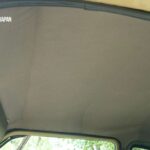Ensuring proper ventilation in auto repair shops is not just about comfort; it’s a critical aspect of workplace safety and regulatory compliance, especially in regions like Ontario. Understanding the ventilation rate requirements is essential for shop owners, managers, and employees to maintain a healthy and safe working environment. This article delves into the ventilation rate requirements for auto repair shops in Ontario, drawing from industry standards and regulations to provide a comprehensive overview.
Ventilation rate, often measured in Air Changes per Hour (ACH), is a fundamental concept in industrial hygiene. ACH indicates how many times the total volume of air in a workspace is replaced with fresh air within an hour. This metric is vital for diluting and removing airborne contaminants, such as exhaust fumes, solvent vapors, and particulate matter, commonly found in auto repair environments.
To illustrate ACH, consider a typical auto repair bay. If a bay has a volume of 625 cubic meters, an ACH of 1 means that 625 cubic meters of fresh air must be introduced every hour to replace the existing air volume once. The calculation is straightforward:
Air Flow Rate (m³/hour) = Air Changes per Hour (ACH) × Room Volume (m³)
For example:
Vroom = 12.5m (length) x 12.5m (width) x 4m (height) = 625 m³
Air Flow Rate for 1 ACH = 1 ACH * 625 m³ = 625 m³/hour
Image: Illustration depicting air flow rate calculation for ventilation, emphasizing the importance of air changes per hour (ACH) in maintaining air quality in workspaces like auto repair shops.
While the concept of ACH is universally applicable, specific requirements are often set by regional and national regulations. In Ontario, the Occupational Health and Safety Act – Regulation 851 for Industrial Establishments outlines the general requirements for ventilation in industrial settings, including auto repair shops. Sections 127 and 128 of this regulation emphasize the need for “adequate ventilation” and “replacement air” to ensure a safe and healthy workplace atmosphere.
Although Regulation 851 doesn’t specify exact numerical ACH values for auto repair shops, it mandates that ventilation systems must effectively remove or dilute hazardous substances to protect workers’ health. This performance-based approach requires employers to assess the specific hazards in their auto repair shops and implement ventilation strategies accordingly. Factors influencing the required ventilation rate in an Ontario auto repair shop include:
- Type and volume of contaminants: Shops dealing with heavy engine repair, bodywork, or painting will generate different types and quantities of airborne contaminants compared to shops focused on routine maintenance.
- Shop size and layout: Larger shops with high ceilings may require different ventilation strategies than smaller, enclosed spaces. The layout, including the placement of work areas and ventilation inlets/outlets, also plays a crucial role.
- Number of employees: The number of workers present influences the overall exposure level and the required ventilation to maintain acceptable air quality.
- Work processes: Activities like welding, grinding, spray painting, and parts cleaning generate significant contaminants and necessitate higher ventilation rates or localized exhaust ventilation systems.
Beyond the general requirements in Ontario’s Regulation 851, industry best practices and guidelines from organizations like ACGIH (American Conference of Governmental Industrial Hygienists) and ASHRAE (American Society of Heating, Refrigerating and Air-Conditioning Engineers) provide valuable recommendations. The ACGIH’s “Industrial Ventilation: A Manual of Recommended Practice” is a widely recognized resource for designing and implementing effective ventilation systems in various industrial settings, including auto repair shops. These resources often recommend specific ACH values or ventilation design parameters based on the types of contaminants and work processes involved.
In conclusion, while Ontario’s Regulation 851 sets a framework for “adequate ventilation” in auto repair shops, it is the responsibility of shop owners and operators to ensure their ventilation systems are effective in protecting worker health. This often involves a combination of dilution ventilation (general air changes) and local exhaust ventilation (capturing contaminants at the source). Consulting with ventilation experts and referencing industry best practices, such as those provided by ACGIH and ASHRAE, is crucial for determining the appropriate ventilation rate and system design to meet both regulatory requirements and ensure a safe and healthy work environment in Ontario’s auto repair shops.

